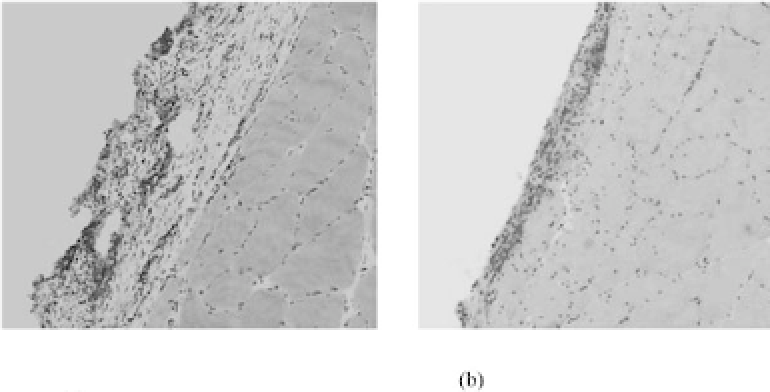Biomedical Engineering Reference
In-Depth Information
(b)
(a)
Figure 5.4.
(a) Highly and (b) moderately hydrophobic model polymers
influencing the degree of inflammatory response.
confers a high degree of hydrophobicity into the scaffold. It was
hypothesized that this factor alone would influence the inflamma-
tory response to a large degree.
Rather than esterification, amidation of the carboxylic acid moi-
eties of hyaluronan was judged to cause a reduction in hydropho-
bicity. By altering the carbon chain length of the attached amide
group, the hydrophobic nature could be further enhanced or
reduced.
The effect of hydrophobicity on the inflammatory response was
tested in a rat model using a model polymer with varying siloxane
content. It was demonstrated that moderate hydrophobicity less-
enedthedegreeofinflammation,whilsthighlyhydrophobicsurfaces
caused heavy macrophage infiltration (Fig. 5.4)
5.2.3
Amidated Hyaluronan Biomaterials
Variousamidatedhyaluronanderivatives,withvaryingcarbonchain
lengths, were evaluated, the two most promising being dodecyl
(12C) and hexadecyl (16C) varieties. Initial investigation demon-
stratedthatareducedhostinflammatoryresponsewasexperienced
with the dodecyl formulation, and so this was used in all further
investigations(Fig. 5.5).










Search WWH ::

Custom Search